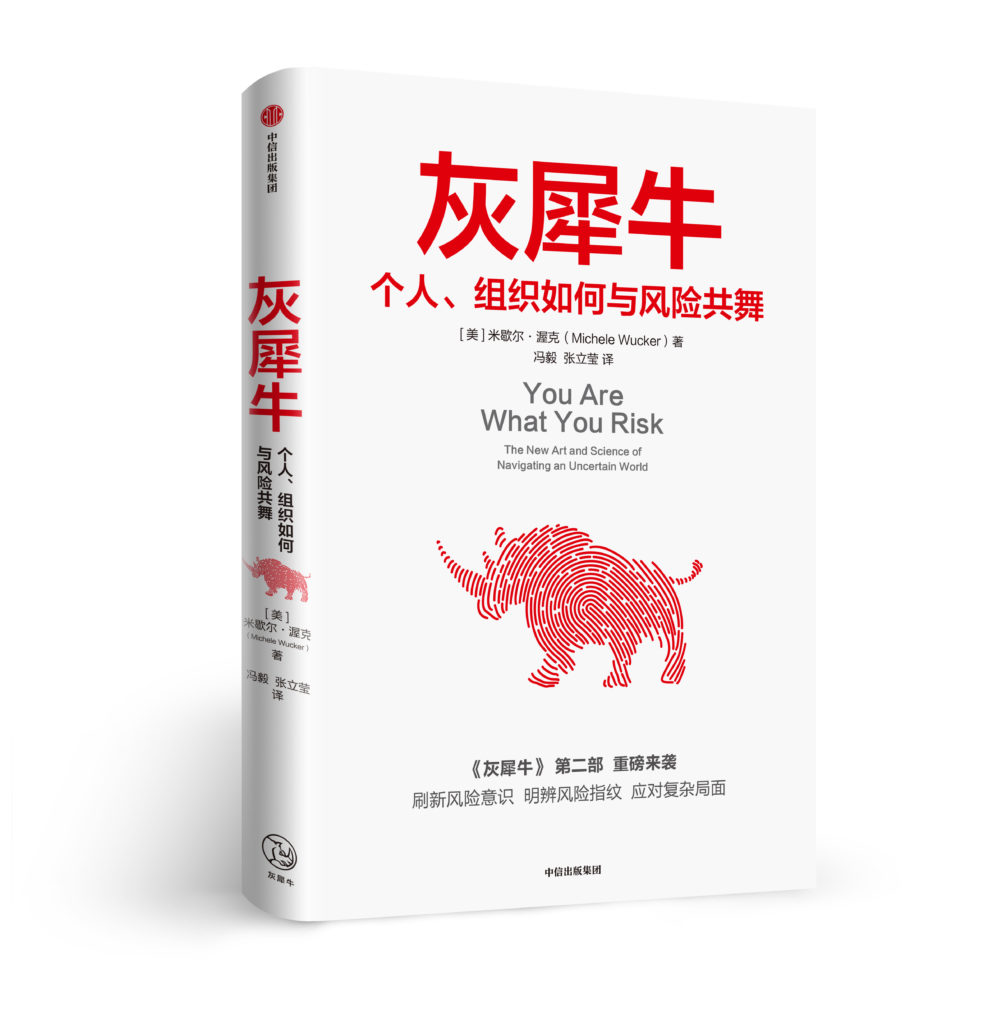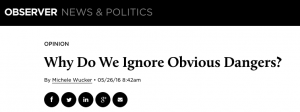The Chinese edition of YOU ARE WHAT YOU RISK: The New Art and Science of Navigating an Uncertain World (Pegasus Books, April 2021), translated by Feng Yi and Zhang Liying, as “Gray Rhino 2: How individuals and Organizations Dance with Risk,” was published in September 2021 by CITIC Press Group to high praise.
The book is part of the Rhino Books imprint featuring high-profile business books by international authors, which was created in 2017 around THE GRAY RHINO: How to Recognize and Act on the Obvious Dangers We Ignore (translated as The Gray Rhino: How to Deal with High Probability Crisis).
From the publisher:
“The popularity of the author and the popularity of the previous book. “Grey Rhino: How to Deal with High Probability Crisis” has become a well-known, hotly discussed and widely used phenomenon-level vocabulary since it was published by CITIC Publishing House in 2017. “Gray Rhino: How Individuals and Organizations Dance with Risk” is not only an extension and supplement to the concept of “gray rhino”, but also a deeper and more microscopic exploration of the essence of “risk”. We cannot ignore the constructive significance of this book for every reader, enterprise, government, and country in the future. “Gray Rhino 2: How Individuals and Organizations Dance with Risks” will once again become a work of the era with great influence with its acumen, foresight and professional depth of content.”
Praise for the China edition of YOU ARE WHAT YOU RISK/Gray Rhino 2:
SINA FINANCE Book recommendation: “This book is Michele Wucker’s new masterpiece.”
Wucker’s “Grey Rhino: How to Deal with a High Probability Crisis” allows us to improve our awareness and trade-offs in the face of political and commercial risks. Her new book reveals to us that individuals at risk, their risk personality, organization, and society’s dynamic feedback loop will affect citizens, organizations, and the government’s different perceptions, reactions, and response results to risks. Building a good risk ecosystem, establishing healthy risk relationships, and fairly distributing risks-related gains and losses, so that as many people as possible can live a better life, should be our principles and pursuit of understanding and weighing risks.
— Wu Xiaoling (Executive Vice President of China Finance Society)
??There are various gray rhino risks in the current society. Personal risks, policy risks, professional risks, economic risks, organizational risks and global risks are intertwined to shape our lives, work and the world. Wucker’s new book, based on the tremendous changes that have taken place in the world in recent years, deeply explores how we make our own choices based on our unique risk fingerprints, and how risk choices shape the relationship between individuals, organizations, and society, and help us inspire us. Work together to build a benign risk ecosystem to support the sustainable development of the economy and society.?
— Xiao Gang (Member of the National Committee of the Chinese People’s Political Consultative Conference)
??The great changes unseen in a century and the superposition of super-epidemics mean that this era is one of frequent occurrences of “black swan” and “gray rhino” events. To gain insight into the new laws of this era, we should peruse this new book by Wucker. This book is not only an extension and supplement to the concept of “gray rhino,” but also a deeper and more micro-systematic exploration of “risk,” which has constructive significance for individuals, enterprises and governments.
–Liu Yuanchun (Vice President of Renmin University of China, Economist) ?
??We have entered an era of comprehensive, full-time, and global risk. Whether it is an individual or an organization, how to accompany risks and build a constructive relationship with them will determine their future. Wucker’s new book provides guidance and an operating system for this.
-Qin Shuo (China Commercial Civilization Research Center, initiator of Qin Shuo Moments of Friends)
??Risk has become the norm in this era. The theme of Wucker’s new book is how to deal with the endless risks. There is no uniform standard answer, and people of different cultures, generations, and personalities have different views on risk. You need to understand your “risk fingerprint” first, and then exercise your “risk muscles.” This book is a survival guide everyone needs to read in the age of risk.
–He Fan (Professor of Economics at Shanghai Jiaotong University, author of “Variables“)
??The big change that has not been seen in a century is also a big opportunity that has not been seen in a century. “Danger” and “opportunity” are always dialectical and mutually transforming. Embrace change, promote change with a positive attitude, shape a good risk personality, and dance with risk. This is the law of nature and the wisdom for us to get along better with the world. Wucker’s new book has strong enlightening value for us to refresh our risk awareness and prevent and resolve risk events.
— Ren Zeping (Economist)

